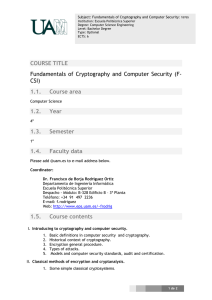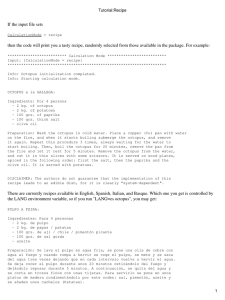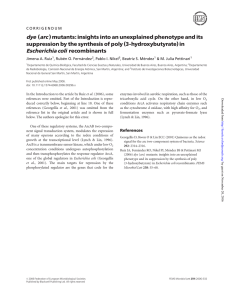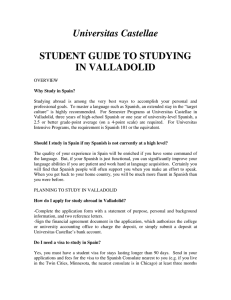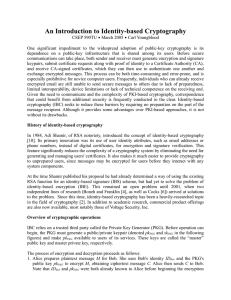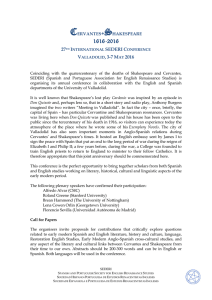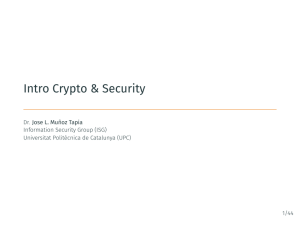Vulnerabilities of code
Anuncio
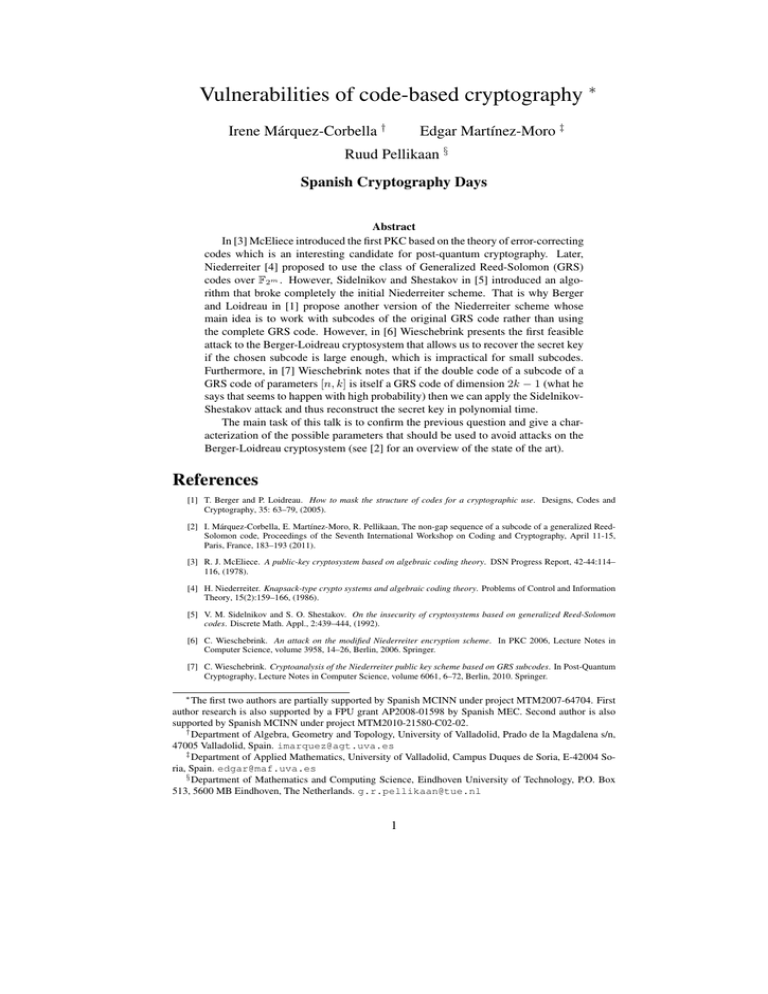
Vulnerabilities of code-based cryptography ∗ Irene Márquez-Corbella † Edgar Martı́nez-Moro ‡ Ruud Pellikaan § Spanish Cryptography Days Abstract In [3] McEliece introduced the first PKC based on the theory of error-correcting codes which is an interesting candidate for post-quantum cryptography. Later, Niederreiter [4] proposed to use the class of Generalized Reed-Solomon (GRS) codes over F2m . However, Sidelnikov and Shestakov in [5] introduced an algorithm that broke completely the initial Niederreiter scheme. That is why Berger and Loidreau in [1] propose another version of the Niederreiter scheme whose main idea is to work with subcodes of the original GRS code rather than using the complete GRS code. However, in [6] Wieschebrink presents the first feasible attack to the Berger-Loidreau cryptosystem that allows us to recover the secret key if the chosen subcode is large enough, which is impractical for small subcodes. Furthermore, in [7] Wieschebrink notes that if the double code of a subcode of a GRS code of parameters [n, k] is itself a GRS code of dimension 2k − 1 (what he says that seems to happen with high probability) then we can apply the SidelnikovShestakov attack and thus reconstruct the secret key in polynomial time. The main task of this talk is to confirm the previous question and give a characterization of the possible parameters that should be used to avoid attacks on the Berger-Loidreau cryptosystem (see [2] for an overview of the state of the art). References [1] T. Berger and P. Loidreau. How to mask the structure of codes for a cryptographic use. Designs, Codes and Cryptography, 35: 63–79, (2005). [2] I. Márquez-Corbella, E. Martı́nez-Moro, R. Pellikaan, The non-gap sequence of a subcode of a generalized ReedSolomon code, Proceedings of the Seventh International Workshop on Coding and Cryptography, April 11-15, Paris, France, 183–193 (2011). [3] R. J. McEliece. A public-key cryptosystem based on algebraic coding theory. DSN Progress Report, 42-44:114– 116, (1978). [4] H. Niederreiter. Knapsack-type crypto systems and algebraic coding theory. Problems of Control and Information Theory, 15(2):159–166, (1986). [5] V. M. Sidelnikov and S. O. Shestakov. On the insecurity of cryptosystems based on generalized Reed-Solomon codes. Discrete Math. Appl., 2:439–444, (1992). [6] C. Wieschebrink. An attack on the modified Niederreiter encryption scheme. In PKC 2006, Lecture Notes in Computer Science, volume 3958, 14–26, Berlin, 2006. Springer. [7] C. Wieschebrink. Cryptoanalysis of the Niederreiter public key scheme based on GRS subcodes. In Post-Quantum Cryptography, Lecture Notes in Computer Science, volume 6061, 6–72, Berlin, 2010. Springer. ∗ The first two authors are partially supported by Spanish MCINN under project MTM2007-64704. First author research is also supported by a FPU grant AP2008-01598 by Spanish MEC. Second author is also supported by Spanish MCINN under project MTM2010-21580-C02-02. † Department of Algebra, Geometry and Topology, University of Valladolid, Prado de la Magdalena s/n, 47005 Valladolid, Spain. [email protected] ‡ Department of Applied Mathematics, University of Valladolid, Campus Duques de Soria, E-42004 Soria, Spain. [email protected] § Department of Mathematics and Computing Science, Eindhoven University of Technology, P.O. Box 513, 5600 MB Eindhoven, The Netherlands. [email protected] 1
